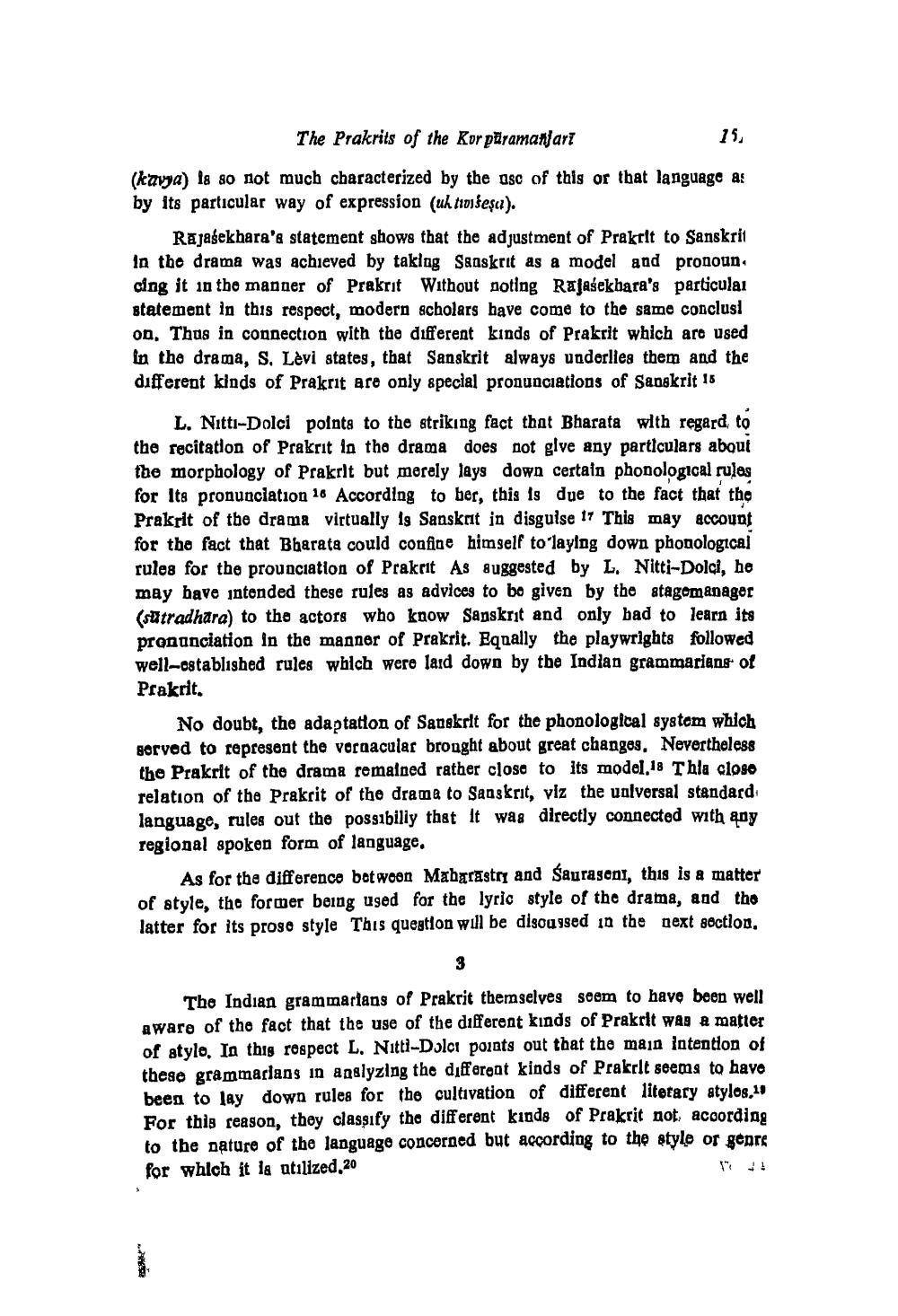________________
The Prakrits of the Kor püramanlari
15.
(kavya) is so not much characterized by the asc of this or that language as by its particular way of expression (uh tišeșu).
Rajasekhara's statement shows that the adjustment of Prakrit to Sanskrit in the drama was achieved by taking Sanskrit as a model and pronoun. cing it in the manner of Prakrit Without noting Rajasekhara's particular statement in this respect, modern scholars have come to the same conclusi on. Thus in connection with the different kinds of Prakrit which are used in the drama, S, Lèvi states, that Sanskrit always underlies them and the different kinds of Prakrit are only special pronunciations of Sanskrit 15
L. Nitti-Dolci points to the striking fact that Bharata with regard to the recitation of Prakrit in the drama does not give any particulars about the morphology of Prakrit but merely lays down certain phonological rules for its pronunciation 16 According to ber, this is due to the fact that the Prakrit of the drama virtually is Sanskrit in disguise 17 This may account for the fact that Bharata could confine himself toʻlaying down phonological rules for the prounciation of Prakrit As Suggested by L. Nitti-Dolci, he may have intended these rules as advices to be given by the atagemanager (sutradhara) to the actors who know Sanskrit and only bad to learn its pronunciation in the manner of Prakrit. Eqnally the playwrights followed well-established rules which were laid down by the Indian grammarians of Prakrit.
No doubt, the adaptation of Sanskrit for the phonological system which sorved to represent the vocaacular bronght about great changes. Nevertheless the Prakrit of the drama remained rather close to its model.18 Thla closo relation of the Prakrit of the drama to Sanskrit, viz the unlversal standard language, rules out the possibiliy that it was directly connected with any regional spoken form of language.
As for the difference between Mabarastry and saurason, this is a matter of style, the former being used for the lyric style of the drama, and the latter for its progo style This question will be disou used in the next section,
The Indian grammarians of Prakrit themselves seem to have been well aware of the fact that the use of the different kinds of Prakrit wag a matter of style. In this respect L. Nitti-Dulcı points out that the main intention of theae grammarlans in agslyzing the differeat kinds of Prakelt seems to have been to lay down rules for the cultivation of different literary atylog,19 For this reason, they classify the different kinds of Prakrit not according to the nature of the language concerned but according to the style or genre for which it la utilized 20




